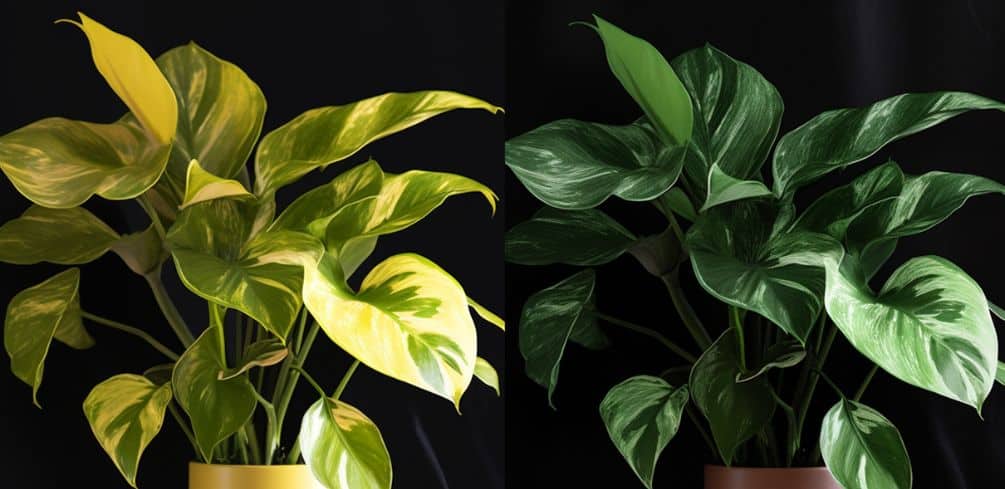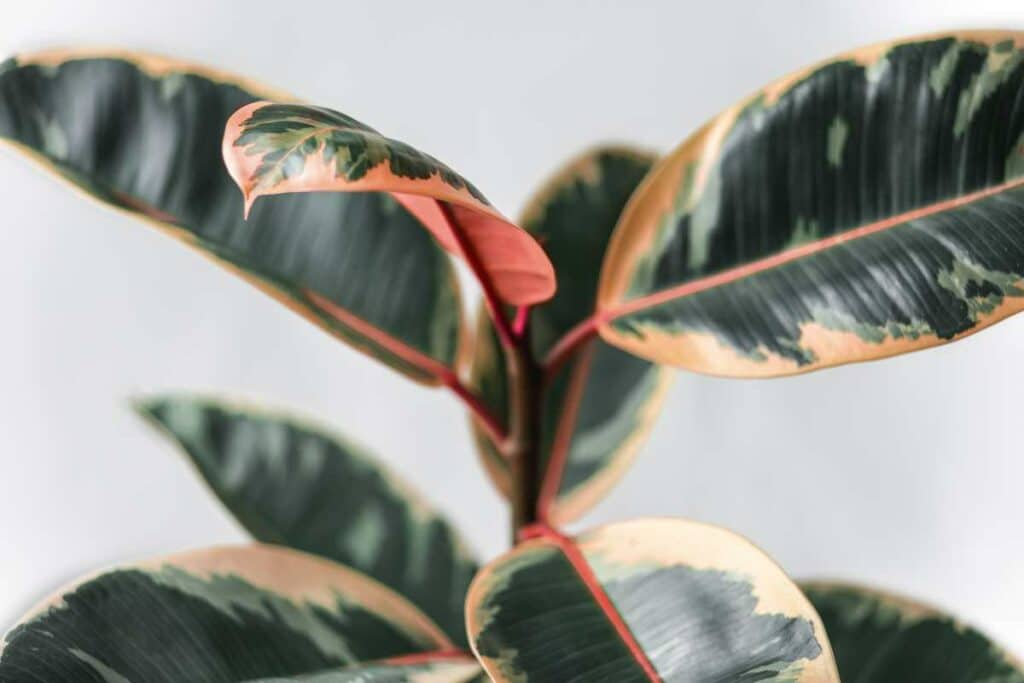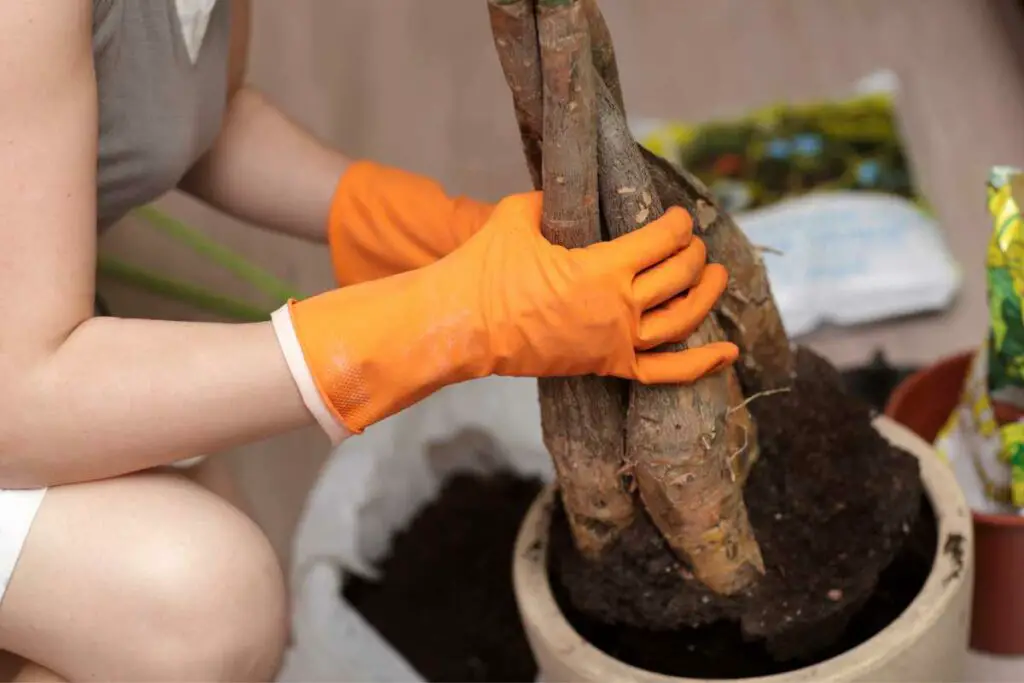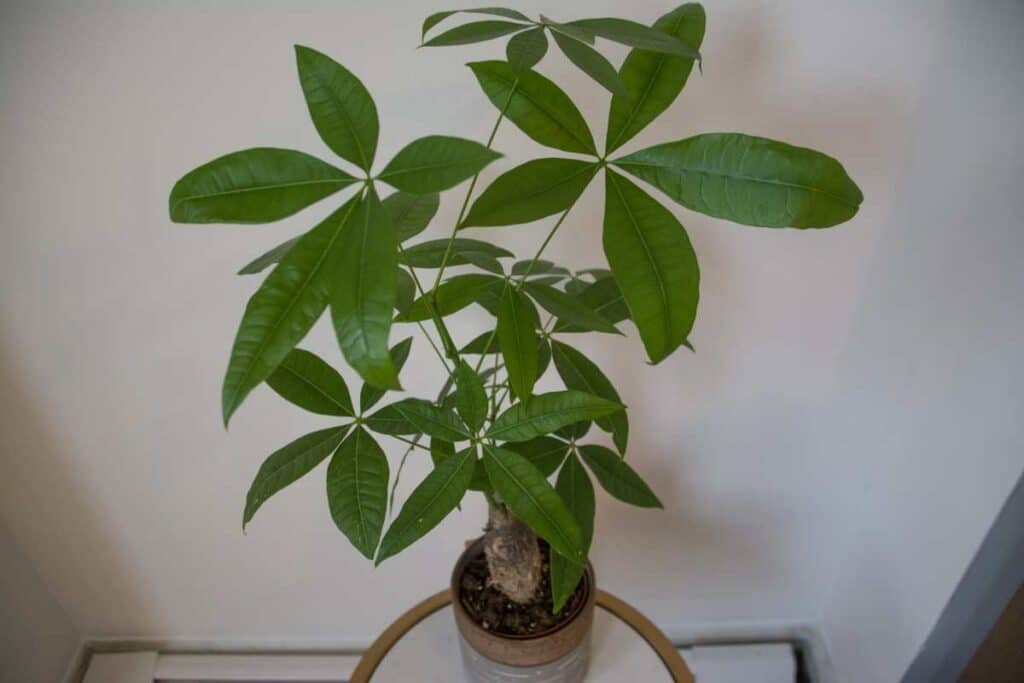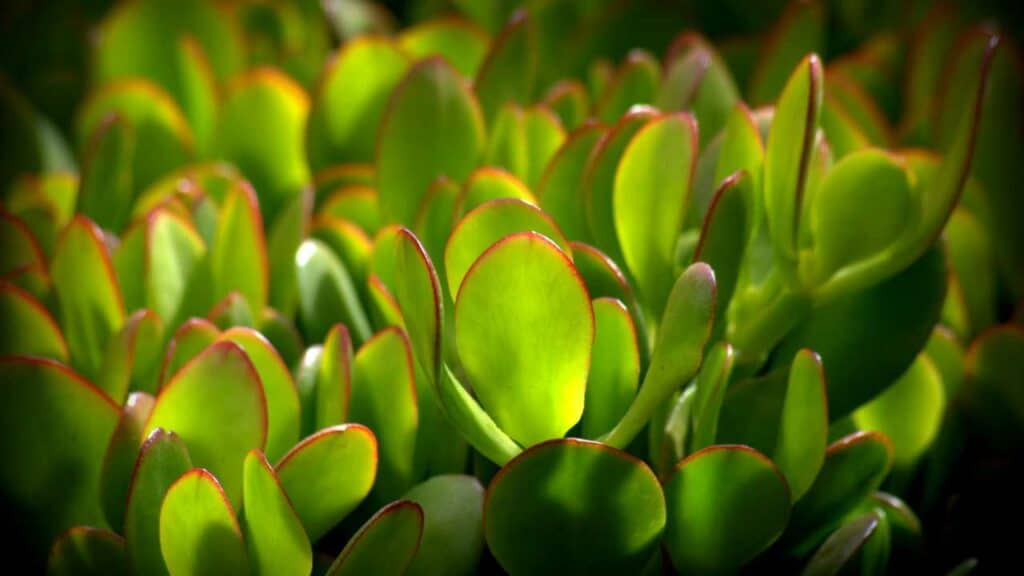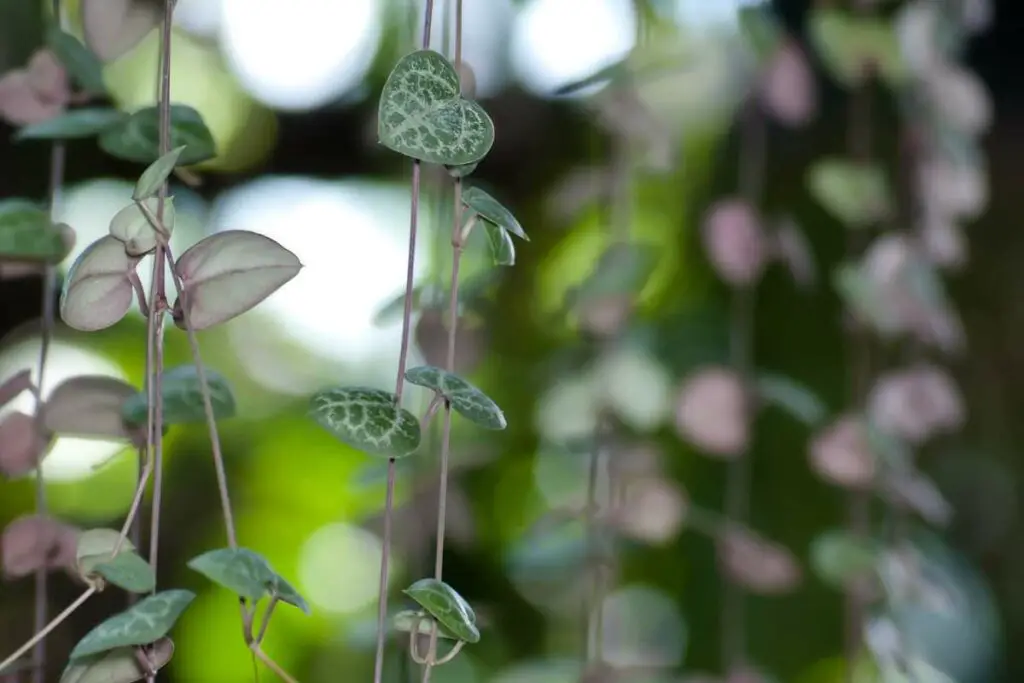We’ve discovered the 21 best purple house plants to liven up your home and bring a pop of color.
The list is as follows:
- Persian Shield (Strobilanthes auriculatus)
- Prayer Plant (Maranta leuconeura)
- Purple Queen or Purple Heart Houseplant (Tradescantia pallida)
- Coleus (Coleus scutellarioides)
- Wandering Jew (Tradescantia zebrina)
- Pilea (Pilea peperomioides)
- Purple Potato Vine (Ipomoea batatas)
- Rex Begonia (Begonia rex-cultorum)
- Purple Velvet or Purple Passion (Gynura aurantiaca)
- Ti Plant (Cordyline fruticosa)
- Chinese Evergreen (Aglaonema commutatum)
- Purple Waffle Plant (Hemigraphis colorata)
- Heart of Jesus (Caladium bicolor)
- Calathea (Calathea sp.)
- Polka Dot Plant (Hypoestes phyllostachya)
- Iron Cross Begonia (Begonia masoniana)
- Purple Shamrock (Oxalis triangularis)
- African Milk Bush (Euphorbia bicompacta var. rubra)
- Silver Squill (Ledewbouria socialist)
- Purple Cyclamen (Cyclamen purpurascens)
- Burgundy Rubber Tree (Ficus elastica)
In this article, you will learn a little bit about each of these beautiful purple houseplants, including what they look like, where they are naturally found, and what makes them unique.
Purple Indoor House Plants
Add some color with an indoor plant. Indoor houseplants come in a lot of different varieties. If one of your favorite colors is purple, then this list is for you.
Growing these plants in your house gives a fun side project and makes the area feel very natural. To take care of these plants, simply add these plants to the pot, add soil, and add water.
Indoor plant care is important, so make sure you find a zone in your home where they will receive plenty of natural light. Then over time, you will see the stem and leaves grow in size, which is very rewarding.
1. Persian Shield Houseplant
Persian shield plants are best known for their brilliant foliage that sports an iridescent purple coloration with a slight silver shimmer and bold green vein stripes.
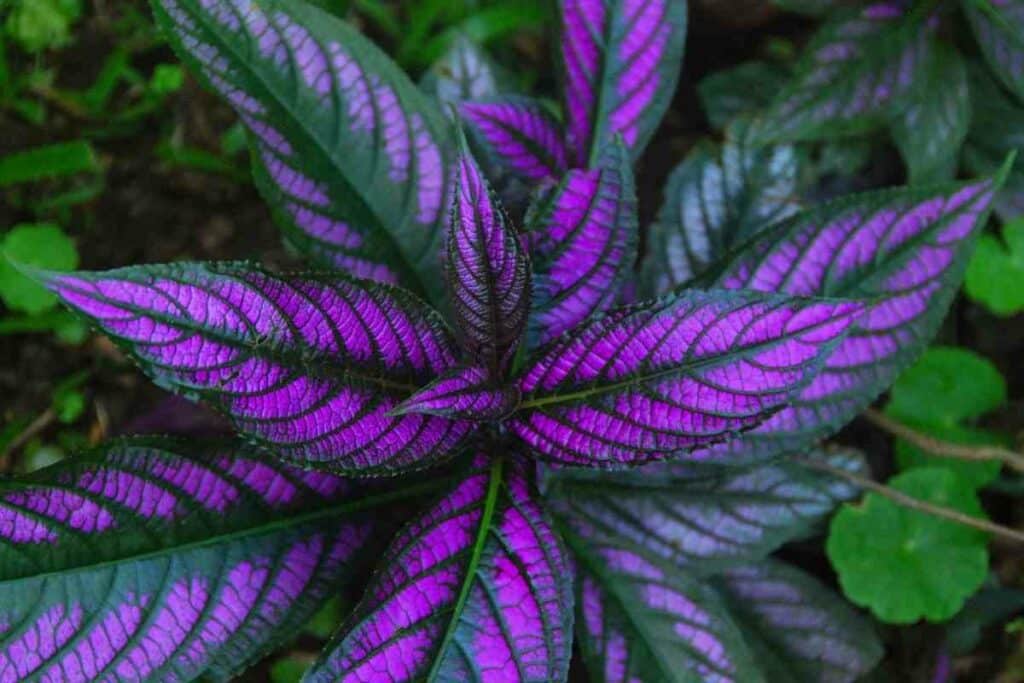
The leaves can grow up to half a foot long in size and make a wonderful addition to any household.
They grow native to the tropical forests of Myanmar.
Persian shield plants are hard to find and do flower, although they are more aesthetically pleasing if the flowers are pruned.
2. Prayer Plant
Prayer plants are low growing houseplants with bold emerald or mossy green leaves striped with coloration from burgundy to deep purple.
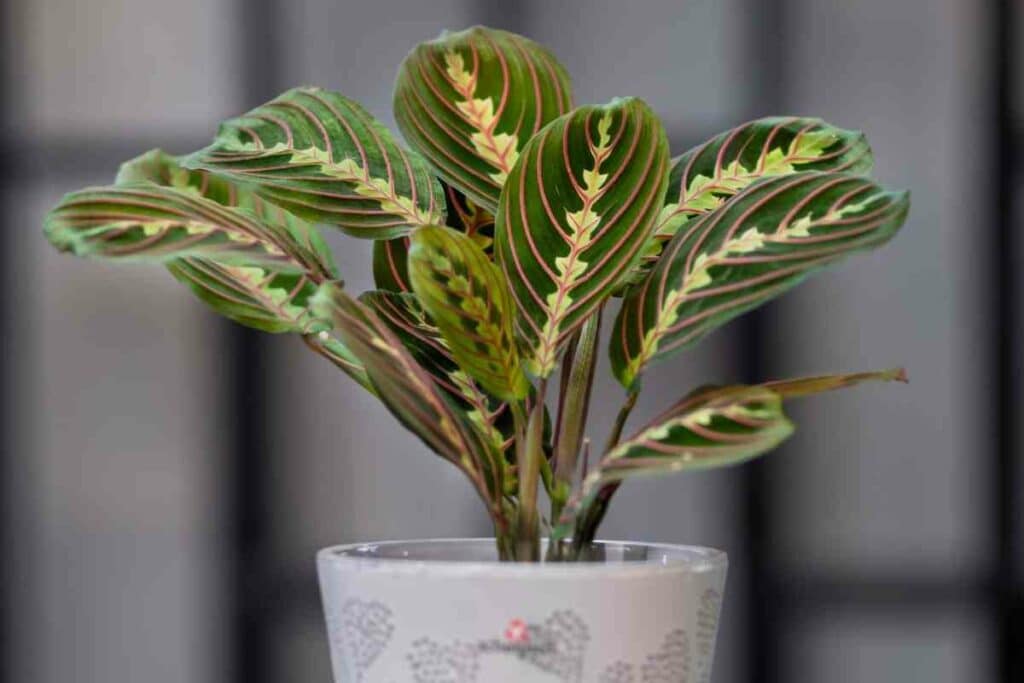
These plants are native to the forests of tropical South and Central America.
They get their unique name from the way the leaves fold up along the midrib seam in the evening, mimicking a pair of praying hands.
3. Purple Queen
Purple queen plants sport both purple leaves and purple flowers. The perfect indoor purple plants to show off some style.
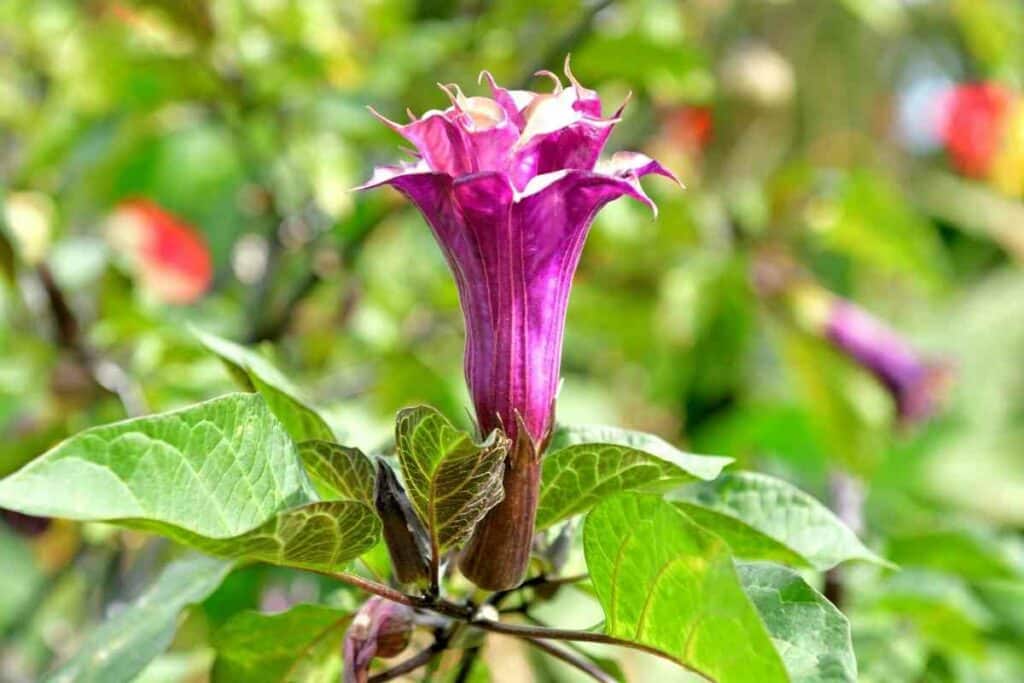
The blooms are a delicate light lavender color, while the foliage is dark velvety purple.
Purple queen is native to the Gulf coastal forests of eastern Mexico.
Purple queen plants have the ability to remove pollutants and heavy metals from the air, allowing for a healthier living space.
4. Coleus Plant
Coleus can come in a variety of patterns of light green and magenta.
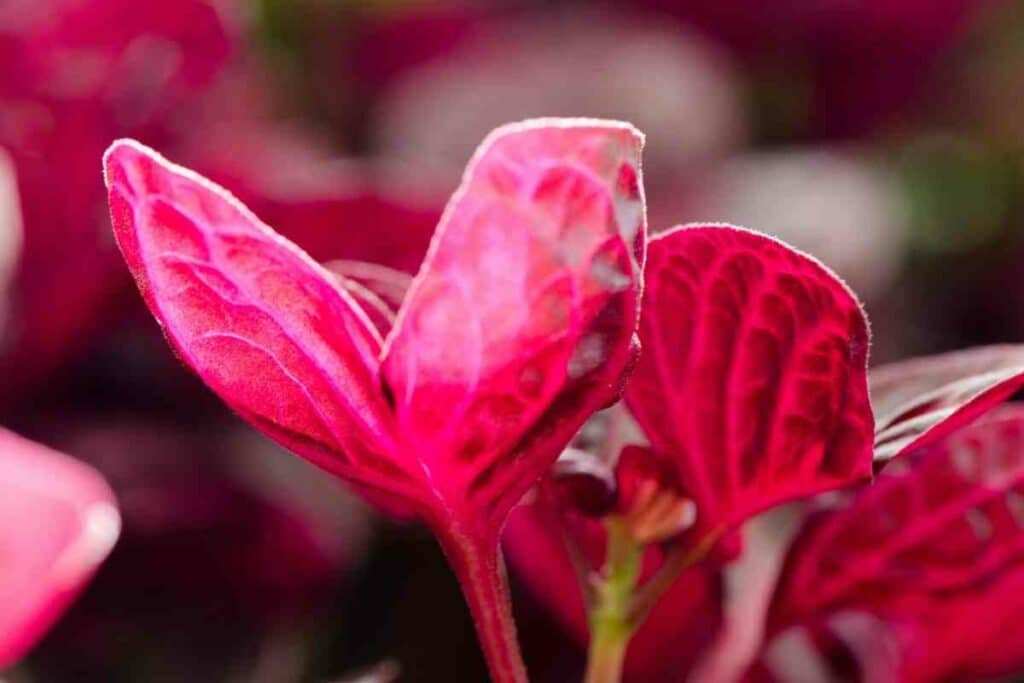
The most striking variants have largely magenta leaves with an outline of light green or fully green leaves mottled with splotches of magenta.
Coleus is native to the tropical and subtropical forest understories of Malaysia and Southeast Asia.
The plant’s name came from the Greek word for sheath and was a very popular garden addition during Victorian times. Perfect for the house and even comes with a cool story.
5. Wandering Jew
Wandering Jew plants have heart-shaped green leaves accented by purple stripes and a silver sheen.

When they flower, the blooms can also be purple in color.
Wandering Jew plants are native to:
- Central America
- Colombia
- Mexico
- and the Caribbean islands
Their species name means zebra, and their leaves can actually change color depending on the type of light they are exposed to.
In High Light: The foliage appears more purple, while in low light, it looks greener.
6. Pilea Plant
Pilea plants have distinctive circular leaves whose stems are attached midway underneath the leaf as opposed to on the bottom edge like most foliage.

They are native to southern China, where they are sometimes referred to as Chinese money plants.
The purple variant of Pilea is very rare but makes for a strikingly unique display for any household living space.
7. Purple Color Potato Vine
The purple potato vine is an ornamental vine whose foliage has a dark purple coloration and three distinguished lobes in the shape of a T. Purple potato vine is native to North America, especially along riverbanks and woodland edges.
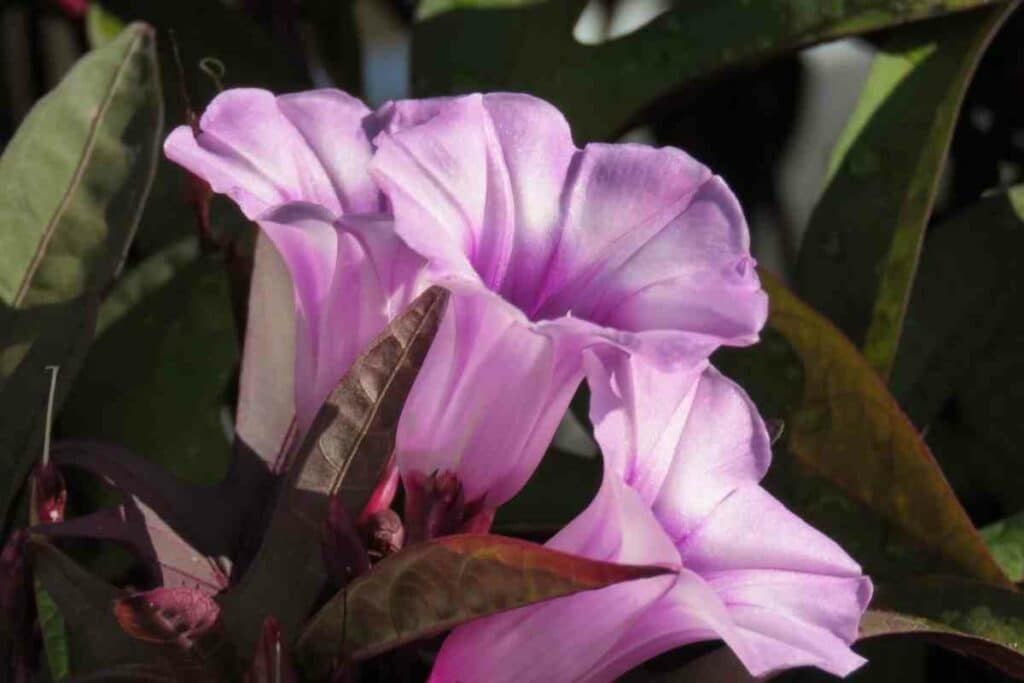
The vines are best displayed in hanging plant pots and can grow up to ten feet long if left unmanaged—more great plants for your house.
8. Rex Begonia
Rex begonia plants have fancy, deeply veined leaves that can be a strikingly rich purple color which leaves little no doubt as to why they are dubbed the king of begonias.
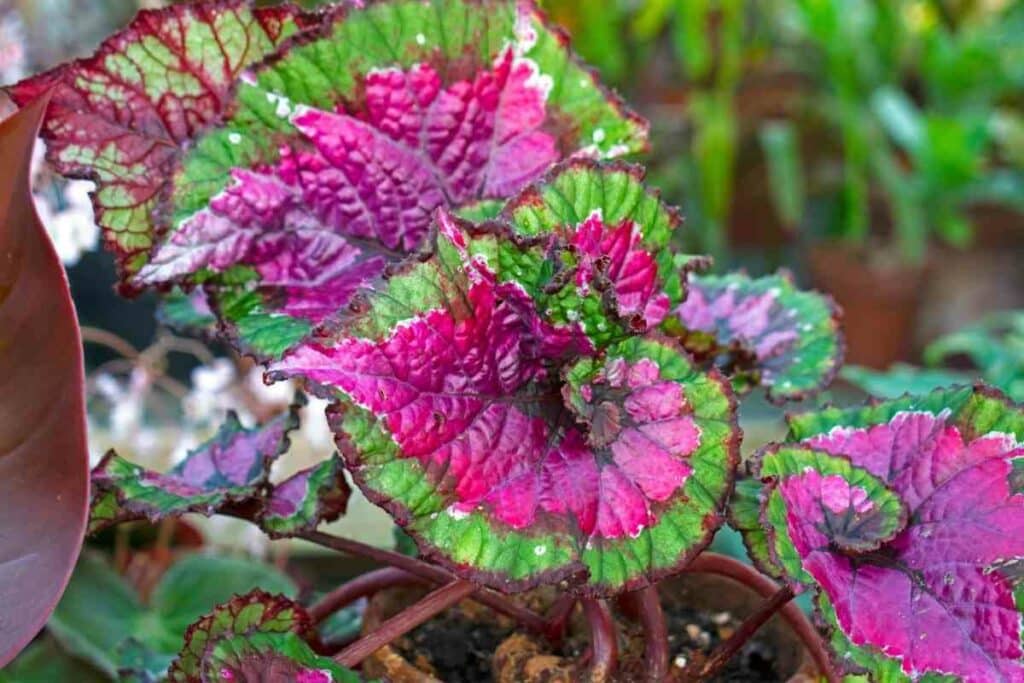
Rex begonias are native to the shady understory of jungles and tropical rainforests.
Rex begonia stems are actually similar to that of a succulent and are used for storing large volumes of water during periods of drought.
This houseplant is one of our favorites though not available in our area.
9. Purple Velvet Plant
Purple velvet has elliptically shaped leaves that are green in color and covered with tiny purple hairs giving it an exotic appearance.

This plant is native to Southeast Asia and is especially common on the Indonesian island of Java.
The arrangement of the purple hairs on this plant makes it appear as if it is glowing on the purple leaves, especially when viewed in full sunlight.
10. Ti Plant
The Ti plant or Cordyline is a brilliant houseplant with long green leaves that are tipped with pinkish purple.
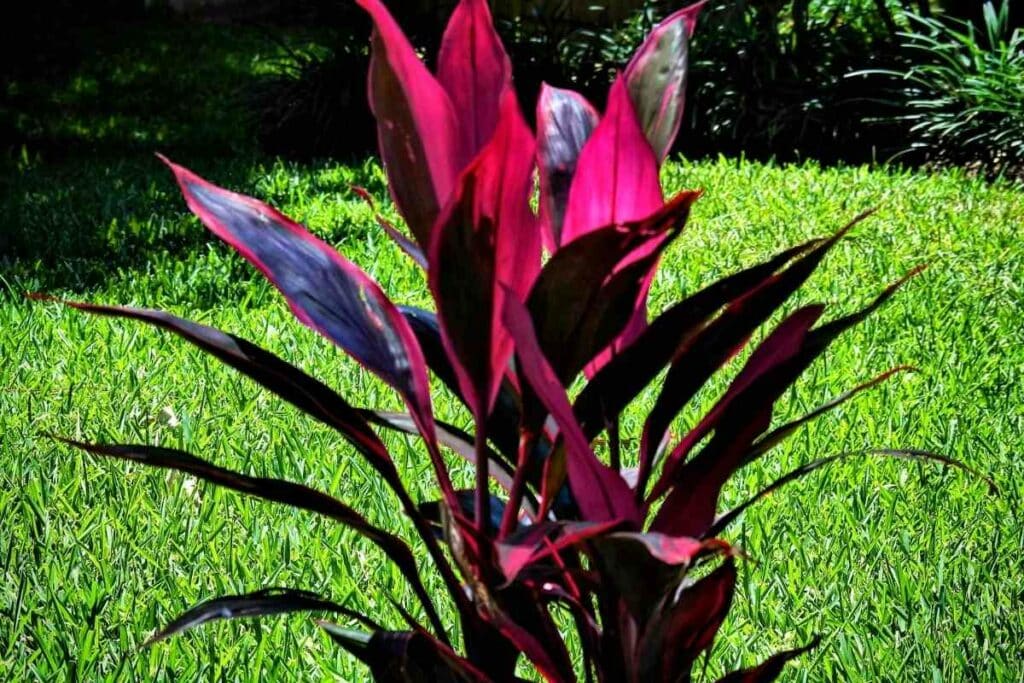
Native to the South Pacific, these plants are fond of tropical environments such as those found on island nations like Indonesia and Hawaii.
Ti plant leaves were used for spiritual rituals by Polynesian people, and in Hawaii, only the chiefs were allowed to wear the foliage as ornamentation.
This is a beautiful plant that is worth taking care of just to watch the growing process.
11. Chinese Evergreen
Chinese evergreens have fleshy, leathery leaves that can come in a variety of colors, including a rich purple with a silvery sheen.
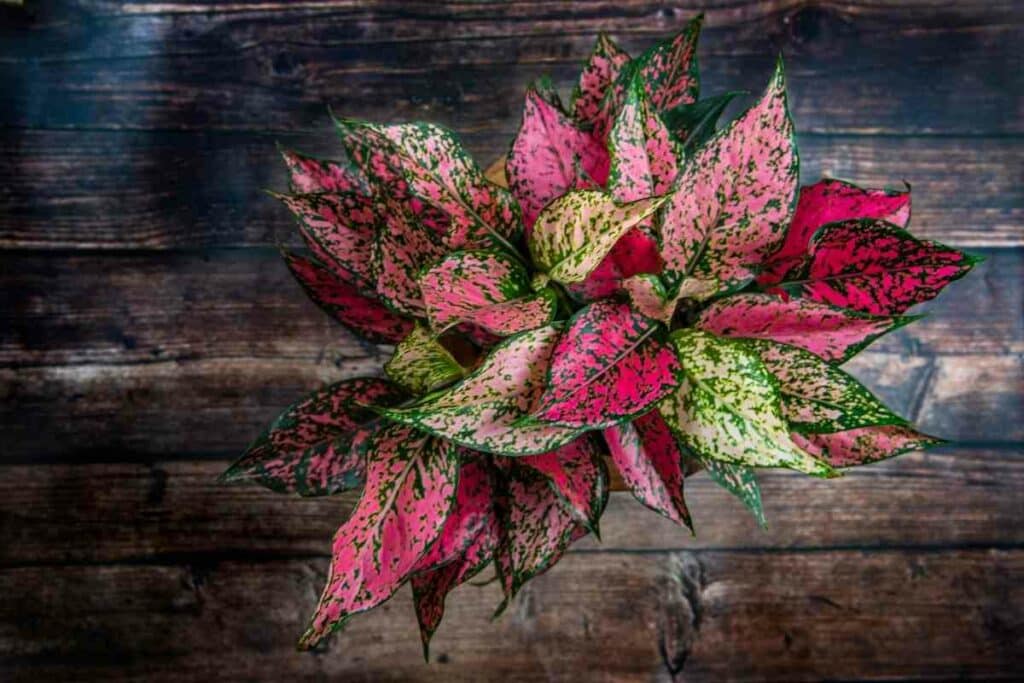
As its name implies, this house plant is native to the tropical regions of Asia, including New Guinea.
Chinese evergreens are very resilient plants and make great houseplants due to their ease of care.
12. Purple Waffle Plant
Purple waffle plants have uniquely textured foliage that feels puckered like a waffle.
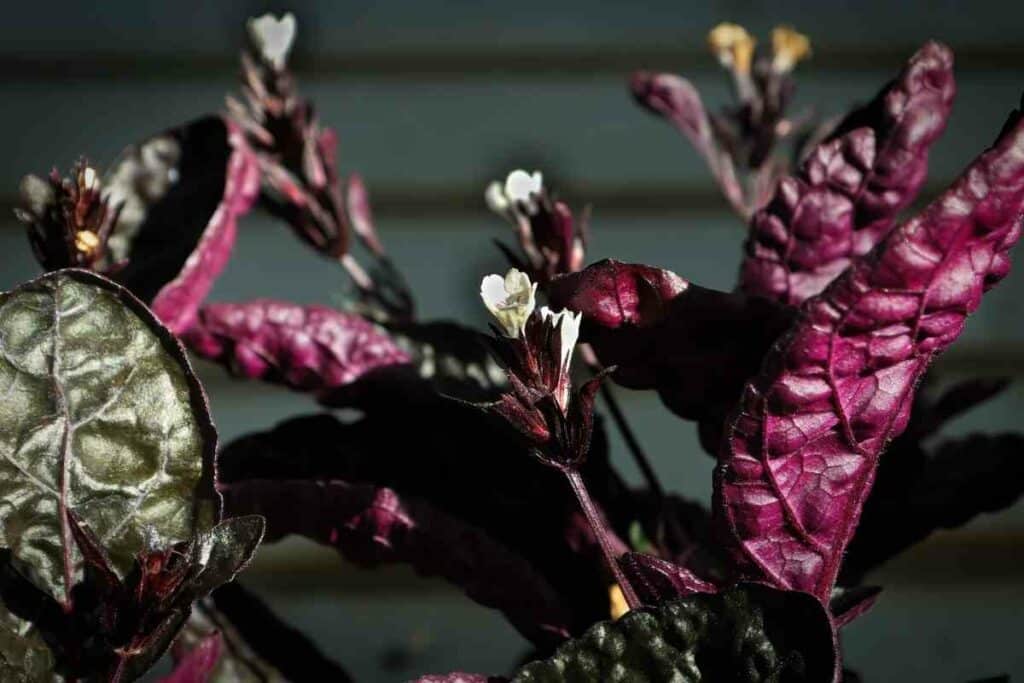
The appearance of these leaves is a brilliant metallic dark green on the topside and rich metallic purple underneath.
Purple waffle plants are commonly found in the understory of jungles and have been known to remove toxins from the air, creating a purified environment.
13. Heart of Jesus Plant
The Heart of Jesus plant is a variant of elephant ears with giant heart-shaped leaves that have magenta centers surrounded by a deep green outside.
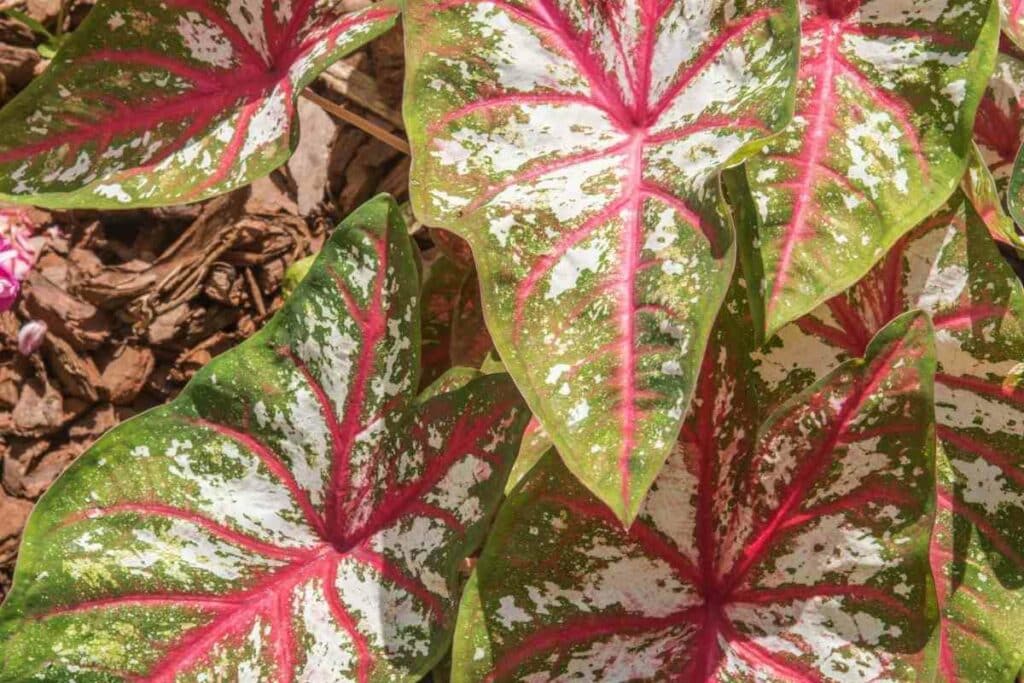
This plant is found naturally in the subtropical and tropical forests of South and Central America.
Ironically: The Heart of Jesus plant is extremely toxic to dogs and ingestion of the leaves can be fatal.
14. Calathea Plant
Calathea plants can display a variety of colored leaves including orange, green, pink, or white but the undersides of the foliage are usually purple.
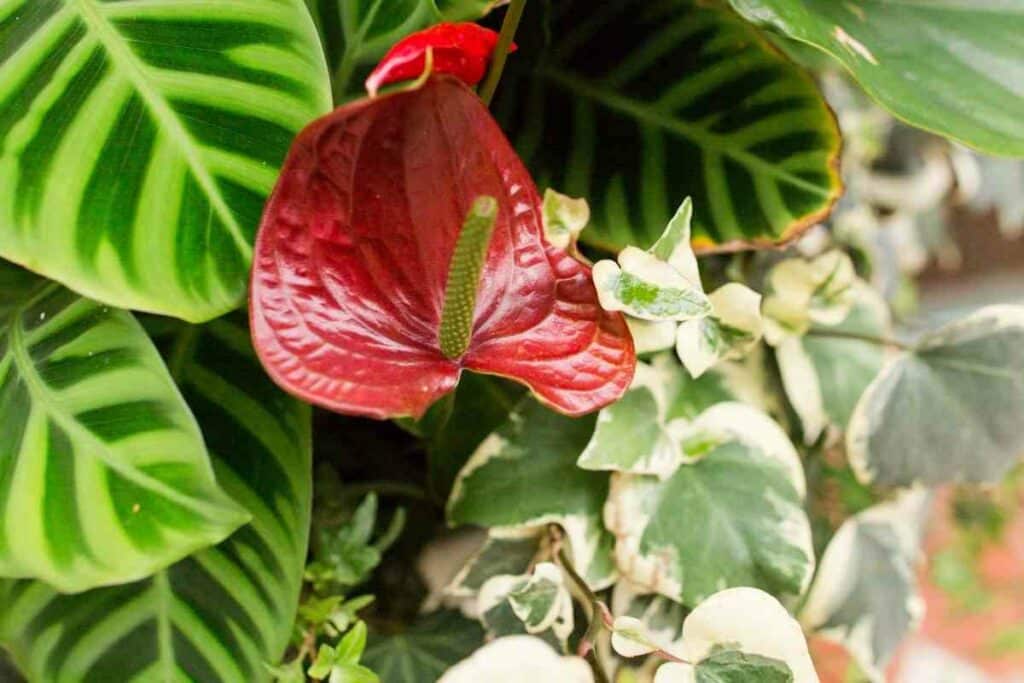
Calathea plants are native to the shady understories of South American jungles.
Calathea plants are related to the prayer plant and can be symbolically given as a gift to indicate new beginnings.
15. Polka Dot Plant
Polka dot plants can come in a variety of colors including pale lavender and dark scarlet with mottled green specks.
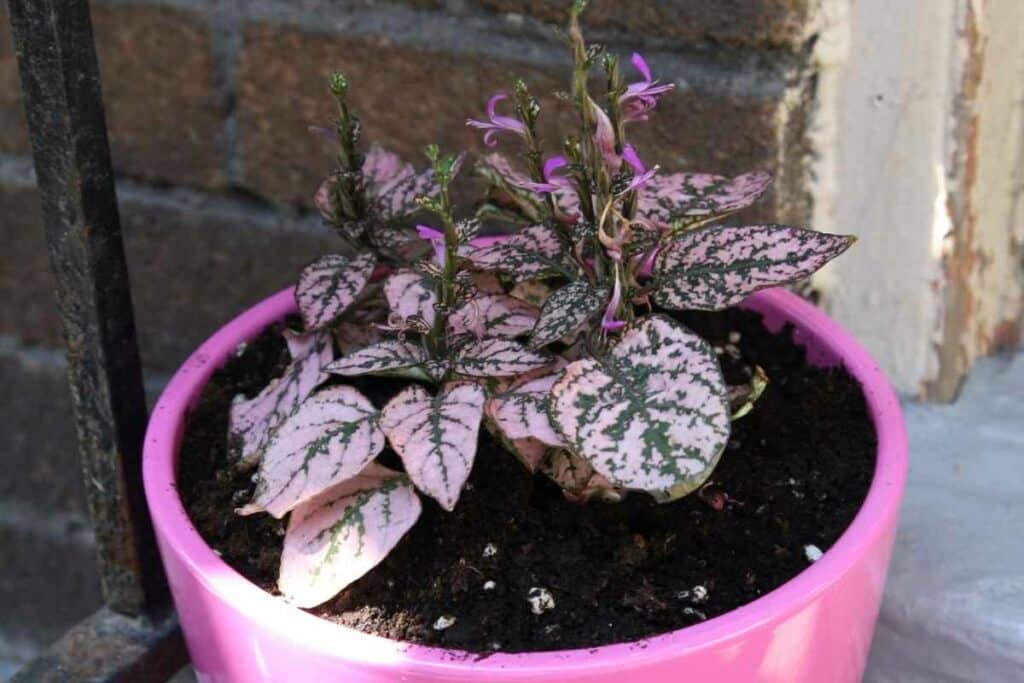
These plants are native to the tropical forests of Madagascar, East Asia, and South Africa.
They enjoy humid environments like those found in their natural habitats.
16. Iron Cross Begonia
Iron cross begonias have light green leaves with a burgundy cross decorating the middle of the foliage as its name implies.
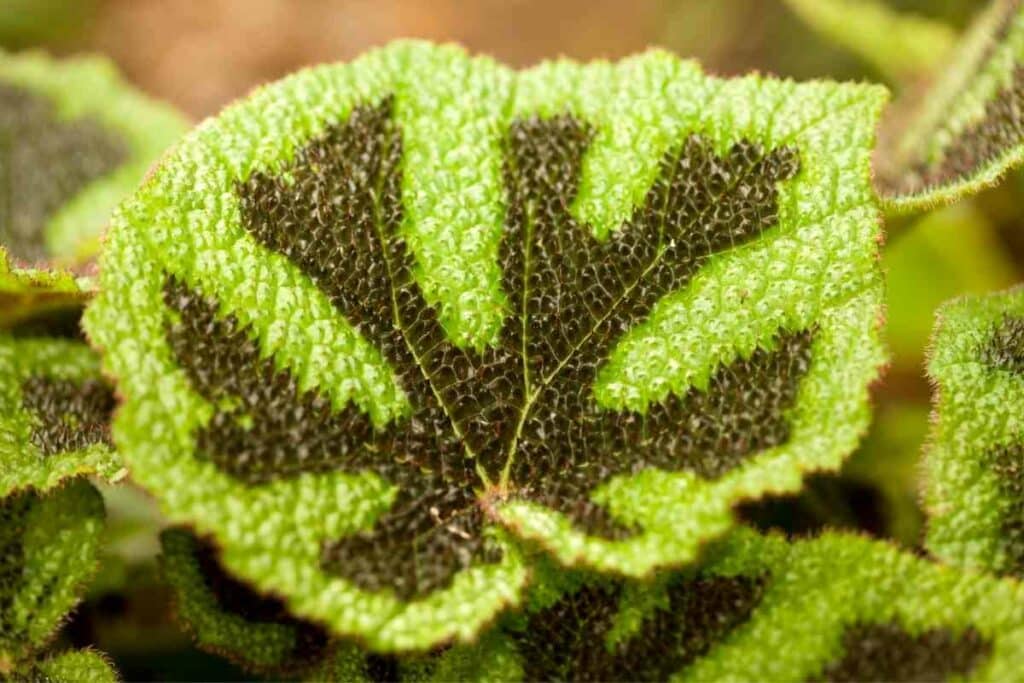
Iron cross begonias are native to Vietnam and China.
While this plant hails from Asian countries, its name was given for the unique pattern’s keen resemblance of the German iron cross.
17. Purple Shamrock
Purple shamrock displays triangular foliage in clusters of three whose leaves are a dark bold purple color.
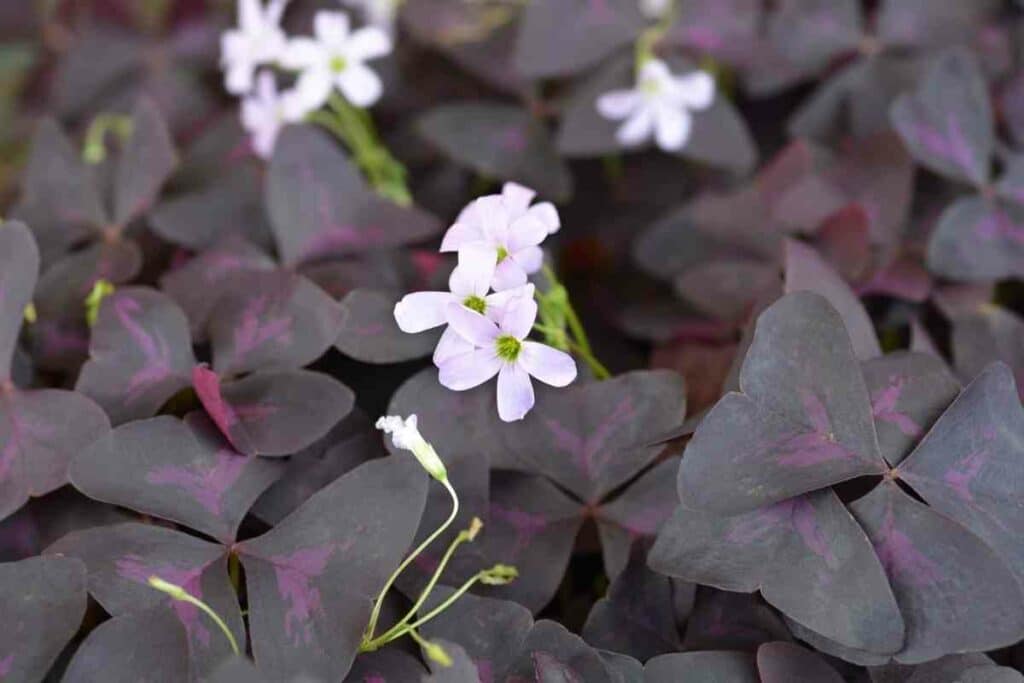
This plant is native to South America and can be found in woodlands and forests.
The purple shamrock is actually edible and makes a great addition to salads, providing an excellent source of vitamin C.
18. African Milk Bush
African milk bush is a succulent cactus that grows quite tall and has purple tips where the spines emerge.
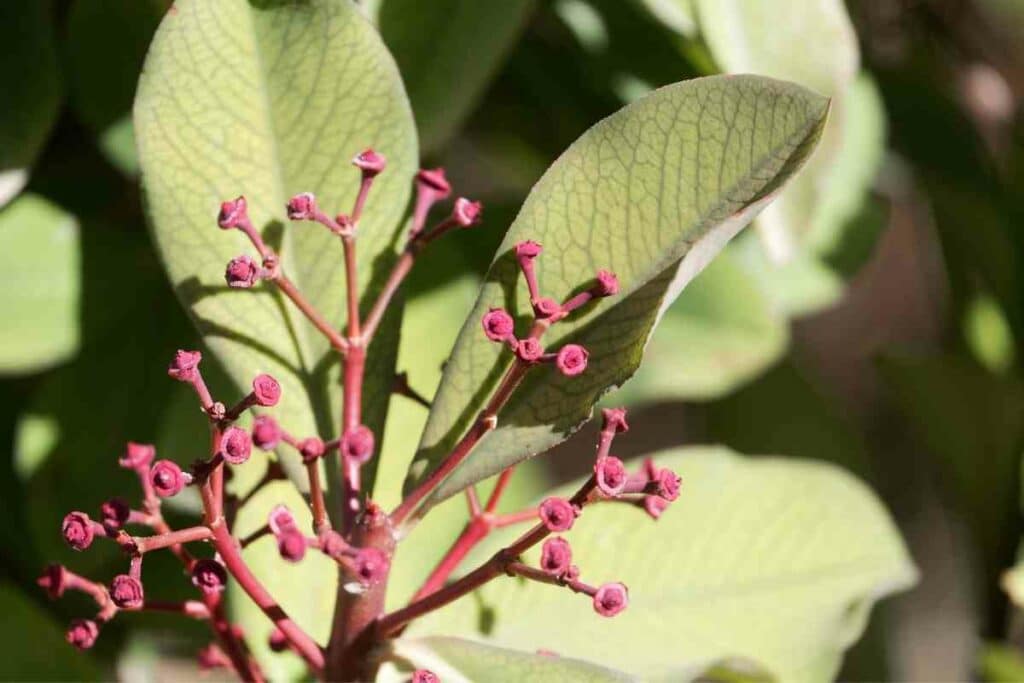
Native to the semi-arid grasslands of Africa, it is quite commonly found in areas where droughts are frequent.
The cactus’ unique name comes from the milky sap which flows from its flesh.
19. Silver Squill
Silver squill is a delicate plant that produces silvery light purple leaves and water storage bladders.

In the summertime, it has blossoms of light green flowers.
Silver squill is native to the woodlands of South Africa.
Keep In Mind: Silver squill is extremely poisonous to pets and can cause renal failure if ingested.
20. Purple Cyclamen
Purple cyclamen has small green and silver leaves with gorgeous purple flowers that mimic folded butterfly wings.
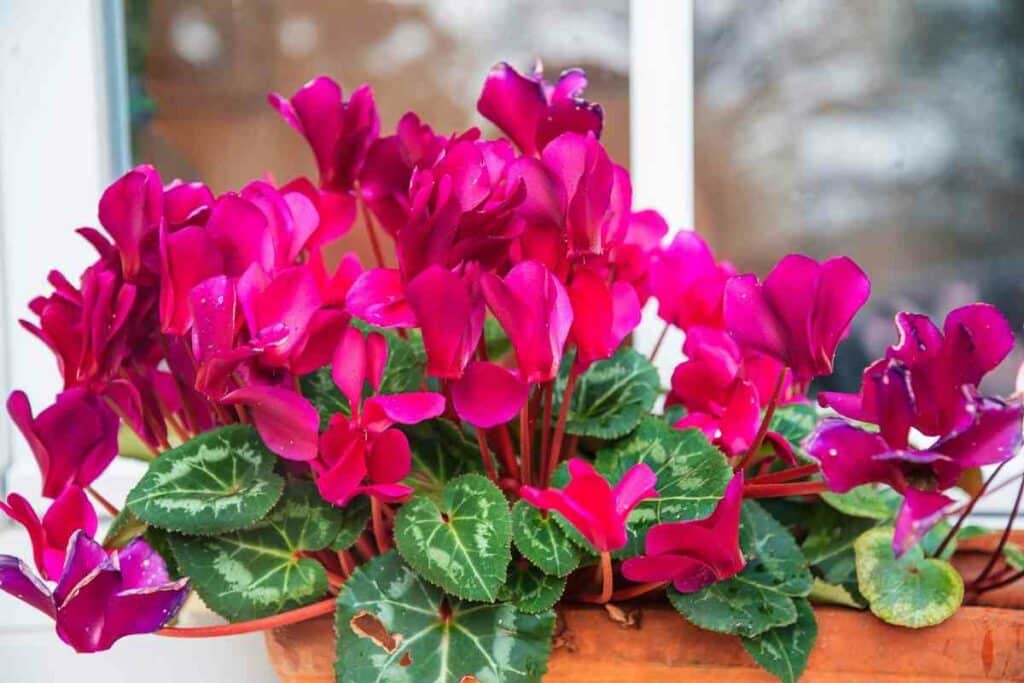
Purple cyclamens are native to the Mediterranean and can withstand a range of climates including dry hot summers and wet cool winters.
Purple cyclamen are symbols of devoted love and represent a holy love in Japanese culture.
21. Burgundy Rubber Tree
Burgundy rubber trees have large leaves that are glossy green in appearance with rich burgundy undersides. They make great houseplants.
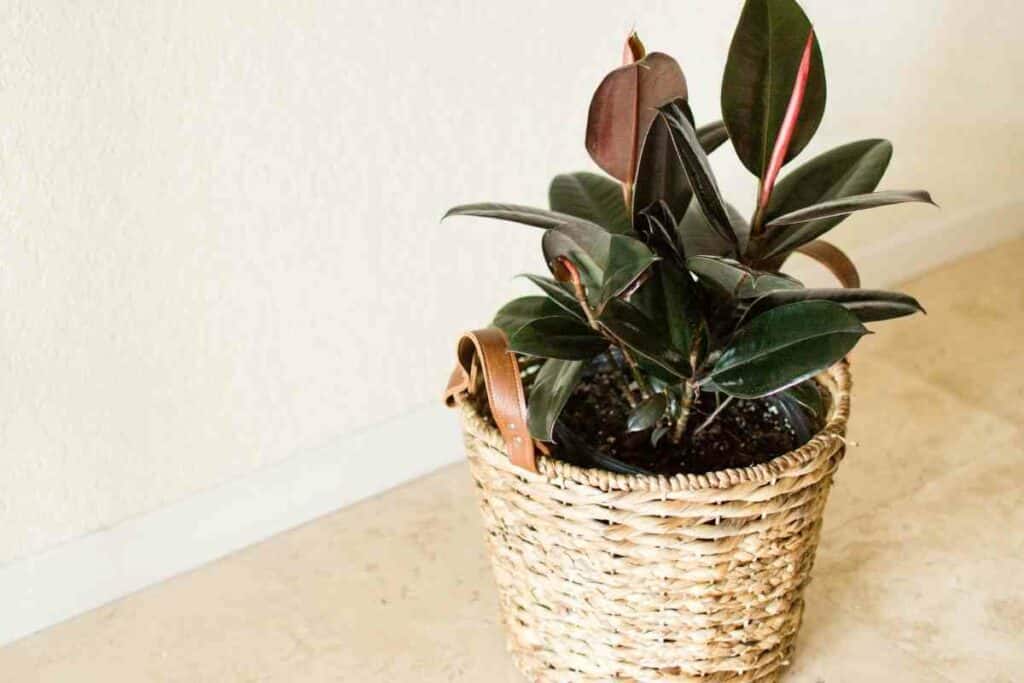
They are native to the South American Amazon rainforests.
Burgundy rubber trees grow and live up to a century in the wild, and their trunks are tapped for the white latex sap.
Houseplants Benefits (Rewarding!)
Houseplants have lots of benefits. Having an indoor plant gives you something to do and take care of. Make sure to have fresh soil for the plants and water them when needed. Make sure it is well-drained soil that works best with plants.
As the plants are growing, it feels like you are responsible for it, which you are—such a great feeling. Feeding and cutting them down also will give this satisfaction feeling.
A lot of these plants won’t reach a tall height, so they can be kept in a pot as they grow.
Final Thoughts
Purple houseplants make a gorgeous addition to any décor and allow a brilliant pop of color to liven up your living space.
From the exotic rainforest plants to the mild humble flowers, each of these unique plants are astounding in their own right and truly embodies the best purple house plants.
What are you waiting for? Find the one you want and get a flower delivery and start growing your own houseplants!
You Might Also Like
- Philodendron Moonlight Vs. Golden Goddess
- How to Revive Your Rubber Plant: 6 Tips to Help Your Rubber Tree Thrive Again
- Your Money Tree Lost All Its Leaves – Will It Sprout Again?
- Why Is My Money Tree Dying? 5 Possible Reasons and Solutions
- Do Jade Plants Bloom – Fact or Fiction?
- Plants with Heart Shaped Leaves (Secret Language of Leaves)
